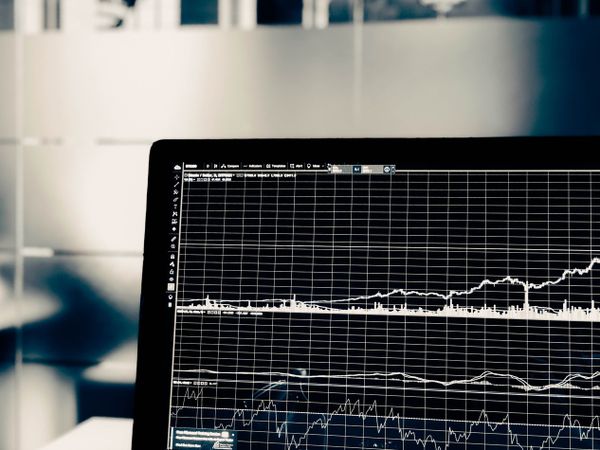
Explaining The Disconnect Between The Economy and The Stock Market
Explaining The Disconnect Between The Economy and The Stock Market
Starting with the end of the 2009 recession, the U.S. economy grew 120 straight months, the longest stretch in history. During that time, the S&P 500 went from a low of 667 to a high of 3,386.
With the economic downturn that began at the outbreak of COVID-19, more than 14 million Americans lost their jobs. The unemployment went from 6.2 million in February of 2020 to 20.5 million in May. And the unemployment rate shot up from 3.8% to 14.4%. The stock market spiraled downward with the economy.
The S&P 500 dropped 34% from its high in mid-February by March 23, the quickest decline of that size in history.
Now some five months later, much of the economy continues to struggle. Large portions of America remain under some level of lockdown. Restaurants, retail outlets, schools, and entertainment facilities remain closed or operate at reduced capacity. Supply and distribution networks are fractured, and the unemployment rate remains above 10%.
The National Bureau of Economic Research determined in June the “unprecedented magnitude of the decline in employment and production, and its broad reach across the entire economy, warrants the designation of this episode as a recession, even if it turns out to be briefer than earlier contractions.”
Yet the stock markets have rebounded with vigor. As of the beginning of August, the S&P 500 is within 2% of record highs. It’s a “huge disconnect” from reality on the ground, said Robert Jenkins, head of global research at Lipper. “The disconnect from basic human suffering is shocking…It gets more and more insane by the day.”
Reasons for the Disconnect
1. Stock Prices are a Leading Indicator
Stock prices tend to rise or fall in advance of strengthening or weakening economic conditions, whereas economic data are trailing indicators; they clarify what has already happened.
Economic statistics revealed throughout July are for the Second Quarter or the month of June and reflect the continued weakness, although gradually improving, of an economy shut down by the Corona Virus.
In contrast, stock investors are looking past the present conditions, toward what they believe will happen in the future, typically six months ahead. They are looking optimistically at the first half of 2021, anticipating COVID-19 containment, perhaps by a vaccine, and conditions returning to normal.
2. Initial Concerns Were Too Pessimistic
When many investors hear bad news and issue sell orders, prices drop rapidly. Panic selling can drive prices to irrational lows. Then a bounce often occurs when stocks are purchased as a bargain, pushing the price back up.
A bargain is a price below an item’s perceived value. However, there is no precedent for determining the value of a stock after a pandemic induced collapse.
Early evaluations in February and March were too pessimistic. Preston Caldwell, a senior equity analyst at Morningstar, observed that a 34% decline in the S&P 500 wasn’t reflective of the pandemic’s likely effect on the long-term U.S. economy.
At the end of May, Wall Street estimates for unemployment were for a decline of 8.3 million and a jobless level of 19.5%, which would have been the worst since the Great Depression era. Instead, payrolls rose by 2.5 million, and the unemployment rate fell to 13.3%. The S&P 500 jumped nearly 4% on the news that it was less bad.
3. The Yield on Bonds is Low
Ten-year Treasury rates have dropped from over 3% in 2019 to just above 1/2%. The low yield on bonds makes them an unacceptable alternative to equities.
Tara Sinclair, a George Washington University economics professor, said she thinks the markets are providing a better place for wealthy people to stash their money than alternatives like bonds or banks. “People, particularly the rich, have cut back their spending, so they need to park their funds somewhere like the stock market,” she said in an email to Neil Paine.
As Paul Krugman of The New York Times pointed out, “Recent stock market performance could be more about something like a savings glut rather than optimism on the future value of companies.”
4. More Government Intervention is Anticipated
Perhaps the most influential piece of the massive Cares Act Congress approved in March was the $600 weekly enhancement to unemployment benefit. It minimized the economic impact of job losses, but it expired at the end of July.
Now investors are anticipating the next stimulus package and extension of the jobs benefit program (either at the full or reduced amounts). The package sits in limbo from congressional deadlock. Still, President Trump’s executive orders will put more pressure on Democrats to compromise as they will not wish for him to claim the credit.
And Treasury Secretary, Steven Mnuchin, told CNBC’s “Squawk on the Street” he is open to more stimulus talks. He noted, “We’re prepared to put more money on the table.” The larger and likely more long-lasting impact on the market is the Federal Reserve’s pledge to support the liquidity of capital markets and purchase corporate bonds.
Kathryn Judge, a law professor at Columbia University and expert in financial markets and regulations, pointed out the Fed’s support disproportionately flows to large corporations with access to credit markets. She said, “Small and midsized businesses with much more need are more likely to struggle.”
The markets are primarily exchanges of the stocks of the large corporations. The struggles of small businesses are proving an additional boon to many large corporations that are gobbling up the markets lost by the small ones and further increasing their share values.
5. A Vaccine is Expected
With the scores of companies and labs working on a vaccine, it seems likely to investors that one will surface soon. Several in the U.S. and around the world are entering final stages of research. The hope is that a vaccine will bring about a rebound in consumer spending and retail sales.
6. Investors Fear Missing Out
After a significant rise in a market, investors who fear missing out buy into the rally, causing the market to rise further. Writing for Project Syndicate, an opinion website, Nobel Prize-winning economist Robert Shiller of Yale University argues that crowd psychology has driven prices up.
FOMO, Fear of Missing Out may be the most significant of the six reasons shown, especially at what is perceived by many analysts to be the end of the rally. Yet, despite all six of the reasons presented above, if this is a market bubble, it could burst abruptly.


